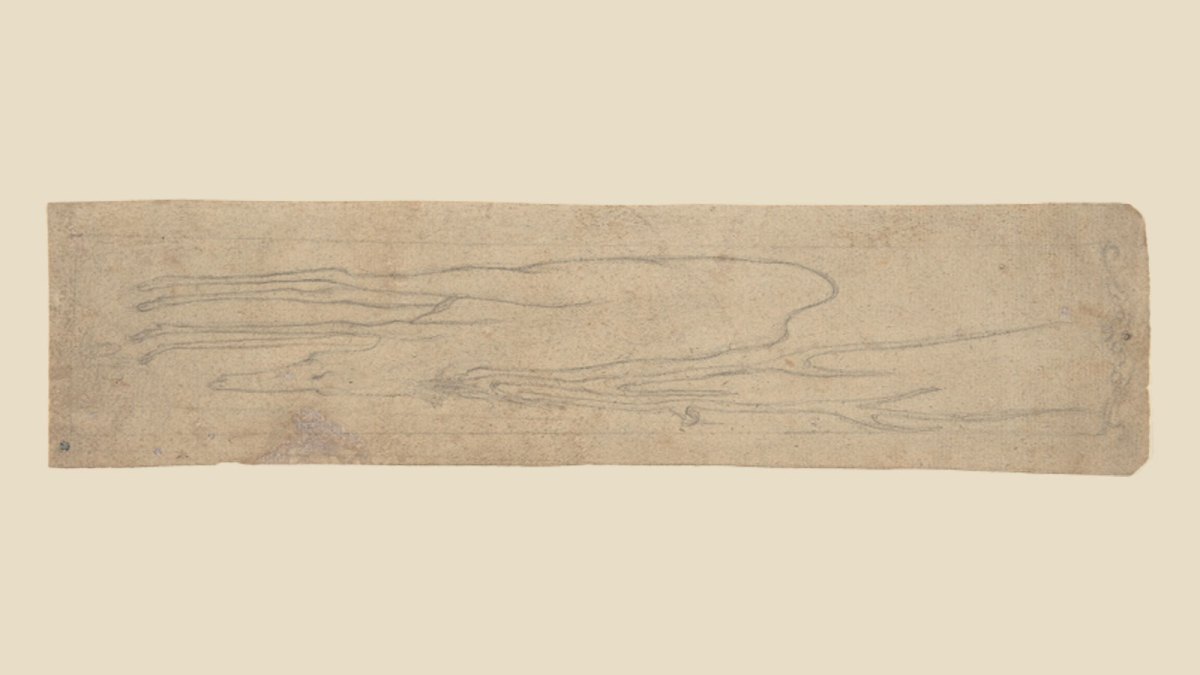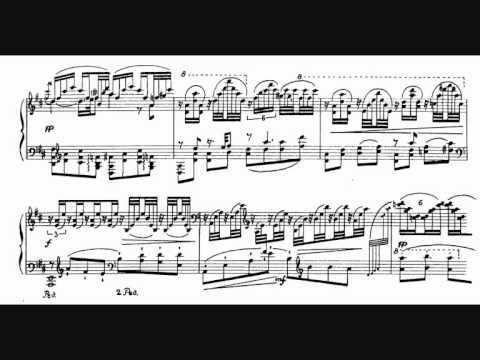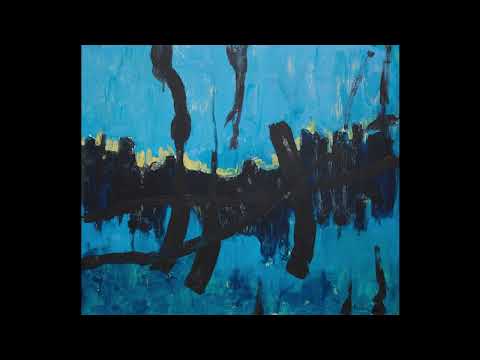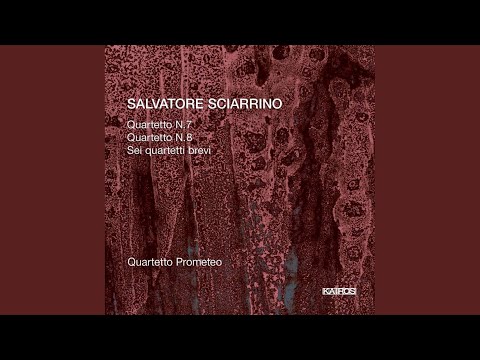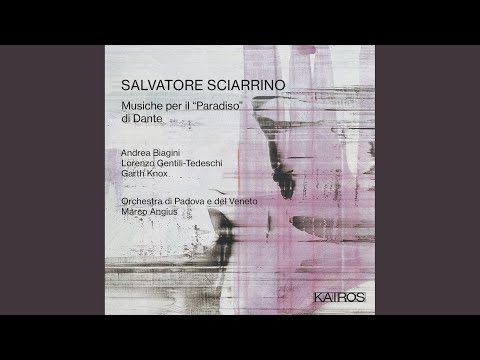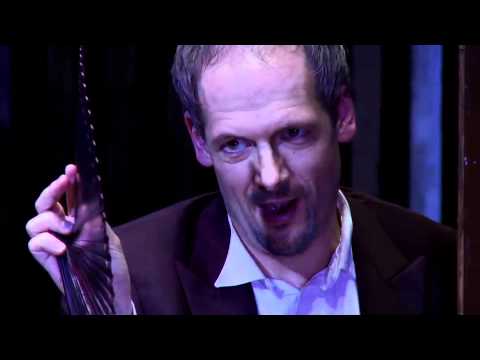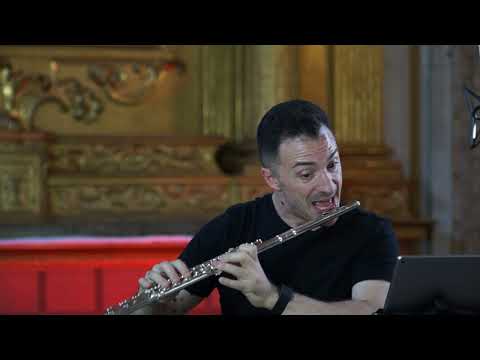“Anamorphosi” (1980)
When the term anamorphosis appeared in the 17th century, it was used to describe a visual effect that had existed for some time but had not yet been given a technical name: by means of an optical transposition a form, not visible at first blush, becomes a readable image when perceived from a certain angle. With “Anamorphosi,” Sciarrino, a lover of erudite games and composer of his own baroque puzzles, extends a technique largely confined to the visual arts to the realm of music.
To this end, he manipulates quotations from the musical past, interweaving them with knowledge and care, so that their content acquires the thickness of history. The point of departure is Ravel’s “Jeux D’eau,” literally “Water Games,” whose opening sonorities coalesce around a major seventh. From this figure, a gradually recognizable undertow emerges: the main theme of “Singin’ in the Rain,” a showtune composed in the late ‘20s and popularized by images of Gene Kelly dancing through puddles in a storm.
It is a play of surfaces, one enveloping the other, that evokes a poetics of water. The composition ends with a final quotation: the stormy passage from Ravel’s “Une barque sur l’océan,” in which the dominant image is that of a lost boat traversing liquid valleys. Curiously, “Miroirs” is the name of the suite that contains this work. Between 1615 and 1625, the mirror appeared in visual art: a new anamorphic device that replaced direct vision with a reflected image, conjuring up miracles and monsters, reflections of reflections, imitations of imitations.
Anamorphosi: a diffusion of aqueous passions.
“Vanitas” (1981)
“Vanity of vanities! All is futile!”
—Kohelet, son of David
Sciarrino speaks (in my translation from the Italian):
“Vanity is a word we are accustomed to using. And yet we have lost the sense of it. We hardly recognize it as the word of the ancient Ecclesiastes. And the Latin dictionary, to which we are no longer accustomed, startles us: Vanitas means emptiness. In the seventeenth century, this word finally came to define a genre of painting that was intensely allegorical. One that suggested the passage of time and the transience of things. In Italy it is called ‘natura morta.’
“‘Vanitas’ opened the season at La Scala in December 1981. Although it departed from the usual musical and theatrical conventions, it was presented as a normal opera, with all the trappings of directorial opulence. But ‘Vanitas’ is a lied. It owes its expressive intimacy to the limitation of its stylizations and movements. As in a dream, however, the proportions are disordered. In our tradition, a lied for voice and piano is a small affair. The dimensions chosen for a lied are comparable to a scrapbook page, even in the luminous clarity in which they reflect the whole universe. ‘Vanitas,’ then, is a lied of proportions never before heard. It stretches the threads of time. Then the music opens up spontaneously to absorb the nuances of its surroundings. In this sense, which is the primary one, ‘Vanitas’ is also a positing of teatro povero. In its hallucinatory expansion of time, the music is spatialized in such a way that it cannot bear any other staging of its own nakedness.
“Imagine a music whose fabric is so vast that it allows another music to shine through. This is ‘Vanitas’⎯a gigantic anamorphosis of an old song, of which it mysteriously preserves an intense perfume.”
“Sei quartetti brevi” (1967-1992): VI
Musical anamorphoses; content and forms borrowed from the cultural past; contractions and expansions that are perceived as boundaries but function as the opening of an as-yet-undeclared frontier. Sciarrino places us in a universe where no figure is ever completely stable. The mercurial spirit underlying his craft is so permeable that it begins to suggest a figure: the shape-shifter.
“We change over time, and as a result, compositions realized in different periods have different characteristics that distinguish them from others,” says Sciarrino. Nowhere are these mutations⎯their formal content as well as their expressive impact⎯more clearly heard than in “Sei quartetti brevi,” a series of six short quartets composed between 1967 and 1992, covering a considerable part of the composer’s career. A body of work in the process of development.
Like those ancient Greek vases depicting creatures of various shapes and species, these six pieces are musical cues to distill the unsaid and the wondrous. Figures emerge and are wrested from the mind of their creator before being lost to time. There is only the world that the mind perceives in the moment of listening. This ephemeral air harmonizes with the brevity of each movement, whose independent life flickers and disappears, raising more questions than it can answer.
“You can conquer a kingdom on horseback, but to rule it, you have to dismount,” to paraphrase a proverb attributed to Genghis Khan. So Sciarrino dismounts, six times. The result is a “constellation neither of normal movements nor of aphorisms, but of something in between.”
The latest from VAN, delivered straight to your inbox
“Musiche per il ‘Paradiso’ di Dante” (1993)
Dante’s Paradiso is full of music. The poet’s passage beyond the human, in his ascent to heaven with Beatrice, is accompanied by songs and dances, pulsations and rhythms that consecrate the glory of God; the kind of music that comes to mind when Neoplatonists ponder the One who moves all things. In Canto XXXII, the Archangel Gabriel’s “Ave Maria, gratïa plena” is delivered with such serenity that it evokes delight in all who hear it. Equally sublime is the sight of St. Anne, Mother of Mary, so radiant at the sight of her daughter that hosannas fall from her lips, a brightness born of love.
The poem, itself a luminous song of songs, absorbs all these scenes, one by one, and arranges them on a verbal canvas. And then there is the circular song of Canto XIV, Solomon’s Song of Joy, which springs forth in response to Beatrice’s articulation of the poet’s unspoken concern: whether the resurrected, glorified body will be so overwhelmed by the splendor of the soul as to be blinded:
That One and Two and Three who ever lives
And ever reigns in Three and Two and One,
not circumscribed and circumscribing all,
was sung three times by each and all those souls
with such a melody that it would be
appropriate reward for every merit.
And I could hear within the smaller circle’s
Divinest light a modest voice (perhaps
Much like the angel’s voice in speech to Mary)
reply: “As long as the festivity
of Paradise shall be, so long shall our
love radiate around us such a garment…(Translation by Allen Mandelbaum)
Sciarrino’s “Musiche per il ‘Paradiso’ di Dante,” especially the second movement, “L’invenzione della trasparenza,” invokes a direct resonance with Dante’s text. It is a vast and sonorous fresco, a study in the iridescence that surrounds supernatural landscapes and figures: auras, halos, rainbows. But unlike Dante, Sciarrino is not a religious man. Even if his work is based on the poet’s ascent to heaven, it is less interested in plumbing the riddles of sacred time than in indulging in its surfaces: its transparencies and densities, and the alchemy that results from the correspondences between them.
If in Dante’s time such textures inspired faith, Sciarrino approaches them through a language stripped of all certainty, an understanding without meaning. Paradise still looms, an open question, even if access to it is postponed.
“Luci Mie Traditrici” (1998)
“A magnificent room prepared for seduction. Even death beckons.”
– Sciarrino, on “Luci mie Traditrici”
Passion is one of Sciarrino’s great themes. It is the ostinato around which so much of his music is built: the expression of an amorous bond that transcends solipsistic desire and can be expressed in relational and historical terms. Consider a work with which Sciarrino’s opera has more than one thing in common: Wagner’s “Tristan und Isolde.” Passion is nothing less than the intrinsic unity that constitutes the duo, the glue that binds the lovers to a catastrophic destiny that unfolds over the course of the opera and opens up to the social order, where it discovers its tragic echo. Passion is never innocent. In opera, it is often imbued with violence.
A tragic violence: “Luci mie Traditrici” dwells in this element, and draws its action and its devastating power from it. A mournful melody, oscillating between blessedness and catastrophe, drives the opera from the beginning and confers on it an ancient, mythical quality. But Sciarrino, always the historicist, places his story on familiar ground, basing it on the murder of Maria d’Avalos by her husband, the Renaissance composer Carlo Gesualdo, who, after ignoring his wife for two years and devoting his energies mainly to hunting and music, discovered that she had taken a lover.
What Gesualdo did next is famous. After pretending to leave his Neapolitan palazzo on horseback to go hunting, he set a trap for the lovers, caught them in his bed, and had them both killed with swords, knives, and a crossbow. That the composer did not murder them himself, but had his lackeys do so, apparently weighed heavily on his conscience. A letter written by Fabrizio Filomarino, a lutenist and friend of Gesualdo’s, reveals that the composer kept a lock of Maria’s hair, which he sometimes looked at and sniffed, and that he also forced his way into the Avalos family crypt where Maria’s body lay, uncovering her tomb to catch a glimpse of her corpse.
Sciarrino draws his material from this event, but uses the space of his opera to focus on the miracle that history has overlooked: the intensity and depth of the passional bond formed between two lovers, coveted by virtually everyone who comes into contact with it and expressed in some of the most luminous and menacing music composed in recent memory. The story of the murder is explored from a new angle: that of the true victim, Maria, whose life was unjustly cut short by an act of jealousy. At the center of it all is her voice, her floating presence on this earth, a shadow of a shadow; and the ambiguities of her longing, caught “between two dreams, both alive and dead.”
“Autostrada prima di Babilonia” (2015)
To close, Sciarrino on Sciarrino again:
“An early symbol of megacities, synonymous with confusion: Babylon, also known as Babel—not far from Baghdad—is one of the most enduring and visited myths of our vast imagination. What will remain beyond today’s settlements, in places ravaged by time, perhaps overrun by the debris and shrapnel of eternal wars? Ruins mixed with ruins. Sand with sand: human history consists of partial and subjective readings.
“Use consumes things, even breath. Certainly even a glance. But even more than those divine enamel doors taken from the deserts of Babylon and sadly reassembled in the interiors of European museums, the names themselves ferment and shimmer in our minds.
“It is not flight and dreams that are evoked by the title of this work. On the contrary, the music is mixed with the impurities of everyday life. My titles always try to offer clues that attract attention and make us question ourselves. A few words, combined with listening, arouse our thinking and our consciousness: in this way we come face to face with the contradictions that the world throws at us every moment and that we insist on ignoring.
“I am not an advocate of titles that hint at intentions (they are alien to language). If anything, I prefer those short labels that indicate the scope or form of this or that work. But an apt phrase can ignite and convey an immediate message. The ideal title is a short-circuit. Consciousness without conscience leads not to dignity, but to pain.
“We are now driving down the highway, sounds whizzing around, the Doppler effect playing the leading role. These are the wayfarers of today’s highways (I have written about them elsewhere), although for those who now set out on the road, space no longer opens wide. What remains are endless little solitudes, multiplied in iron boxes, one behind and next to the other. This phenomenon has grown exponentially with the growth of transportation and world trade.
“Rows of trucks, mask-like with menacing eyebrows, rickety or swarming with collar-like lights, wobbly trailers like ancient carts. They approach, crouching in the shadows: it is the machinery that sleeps, not the helpless beings in their traveling kennels.
“The forced marches, the mind-numbing flow, the assimilation to the machine, all this robs the journey of any sense of initiation. Only something abrupt⎯the accident⎯paradoxically awakens to life. We are all newcomers here.
“Occasional encounters can happen, it is true, like sex—entertainment for many— and risk, of course. Any kind of adventure can happen in the non-place of the unpredictable: we have not yet arrived at Babel, also known as Babylon, at the divine gates.” ¶
Subscribers keep VAN running!
VAN is proud to be an independent classical music magazine thanks to our subscribers. For just over 10 cents a day, you can enjoy unlimited access to over 875 articles in our archives—and get new ones delivered straight to your inbox each week.
Not ready to commit to a full year?
You can test-drive VAN for one month for the price of a coffee.

